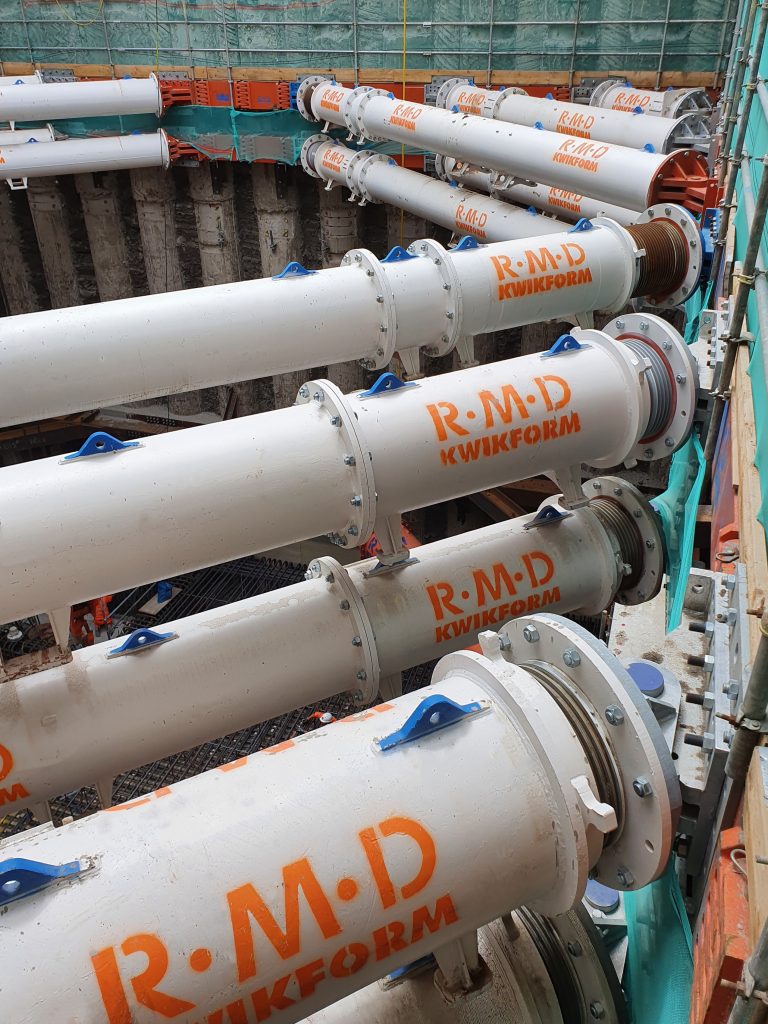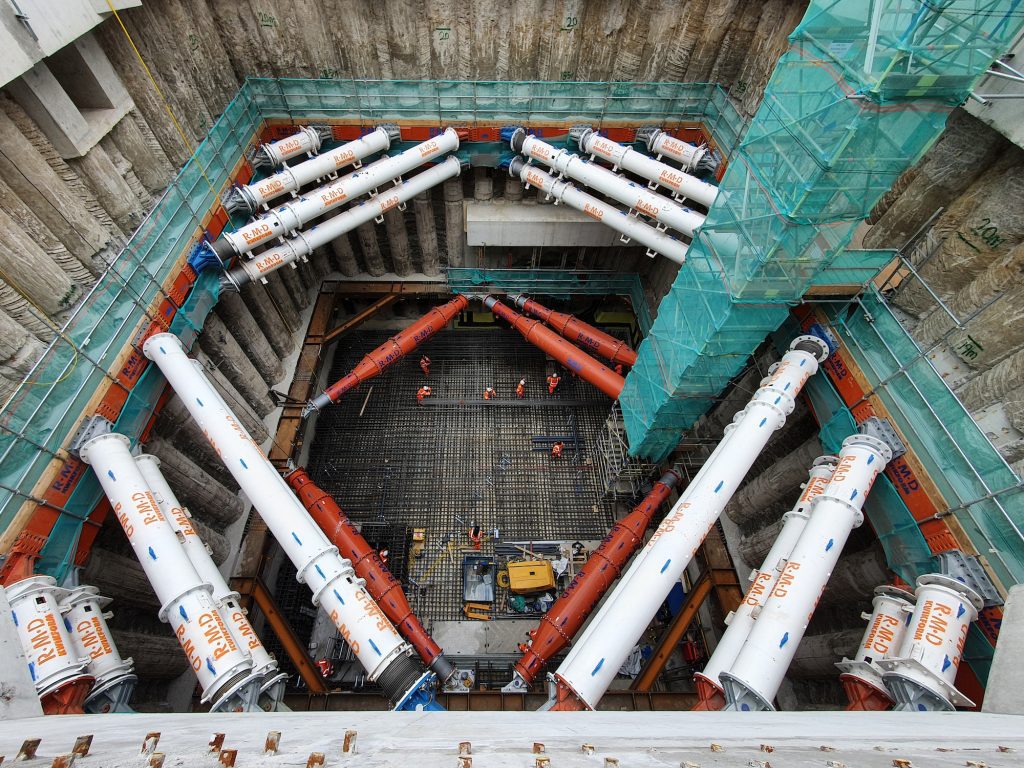Global leader in formwork, shoring and groundworks solutions, Altrad RMD Kwikform (Altrad RMDK), has completed a complex project aiding construction of a Traction Substation (TSS) at Euston Station on behalf of Principal Contractor Mace Dragados, using revolutionary ground shoring techniques for basement excavation.
The TSS at Euston Station is designed to convert London Undergrounds’ private High Voltage (HV) supply to Low Voltage (LV) and Direct Current (DC) supplies to power trains and stations. Its construction required a 20-metre-deep excavation to be supported by 3no. levels of temporary propping.
Unique selling points
The Altrad RMDK solution provided met two key criteria; the first being that all its equipment is CE-marked, making it the only supplier on the market to offer equipment with full European compliance across its fleet, which conforms with relevant EU health and safety or environmental protection directives.
Additionally, Altrad RMDK’s ground shoring equipment is fitted with mechanical screw collars – another feature unique to the company. This innovation isolates the hydraulic jacks from load transmission, thus preventing the chance of hydraulic failure whilst providing a more robust and stiffer propping arrangement with higher deflection control.
Thermal loading
Further to props withstanding earth and surcharge pressures, there are daily fluctuations in prop forces due to ambient conditions, including exposure to heat and UV rays, and these conditions must be considered when calculating and monitoring the effects of thermal loading.
Seasonal variation and exposure to light can significantly affect the load on the props. For example, props operating in full sunlight will behave differently and attract more load compared to those providing support in shaded areas.
Thermal Criteria/Load monitoring
The codes and guidance currently available for the design of thermal actions against structures are aimed at above ground permanent steel structures – meaning that each prop level would have to be designed to the same thermal criteria irrespective of its timeframe of use or installation depth. As the propping application for the TSS box was for a 20.0m deep substructure with multiple prop levels at 0m, 7m and 14m below ground level respectively, Altrad RMDK felt a novel design approach was warranted to achieve a more economical and representative design solution.
Drawing from experience in previous projects where actual total prop loads are typically between 40 – 60% of design loads, Altrad RMDK proposed the temperature ranges for each propping level be determined individually based on UK MET office data records and actual installation/removal dates, whilst using diminishing effects of solar gain over excavation depth. This approach resulted with load reductions of circa 30% compared to conventional design codes.
To justify their rationalised approach, Altrad RMDK constructed a digital twin of the excavation in VR which was geographically aligned to real site location including models of all surrounding buildings to better understand the effects of sunlight throughout the construction period.
For a true insight into actual prop loads, and as an added measure of contingency with their approach, Altrad RMDK deployed high-capacity load cells, namely ‘HD E-Pins’, across all 3 levels of propping – providing real time load results with alert notifications against pre-determined trigger levels. The HD version of the standard E-Pin were newly developed for this project to eliminate the need for traditional strain gauges, which can add further complexity in regard to set up, maintenance and axial load determination for propping applications.
The highly loaded middle level props were also painted white to further boost the thermal range allowance – as a ‘bright’ surface colour provides lower relative solar absorptivity compared to the standard factory orange finish of Altrad RMDK props, thus attracting less thermal load.
By adopting this rationalised design approach for the Euston TSS box, more could be done with less, allowing Altrad RMDK to detail propping in smaller quantity and size; providing the clients with more working room whilst requiring less transport and reducing the overall cost of the build.
Ajay Nagah, Engineering and Major Project Manager – Ground Shoring at Altrad RMD Kwikform, explains: “This project was such an honour to work on and gave us a chance to showcase our expertise and innovation in ground shoring. We are proud of the value engineering we were able to achieve with thermal loading.
“We look forward to working on further projects with Mace Dragados and HS2 and hope to continue pioneering and innovating with new equipment and techniques, which enable us to pass on cost and time savings to our clients.”
For more on Altrad RMD Kwikform, please visit www.rmdkwikform.com


Building, Design & Construction Magazine | The Choice of Industry Professionals





